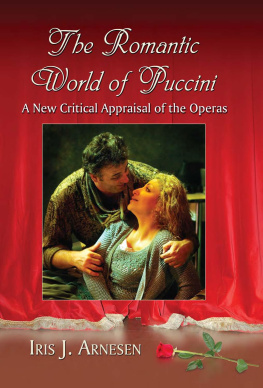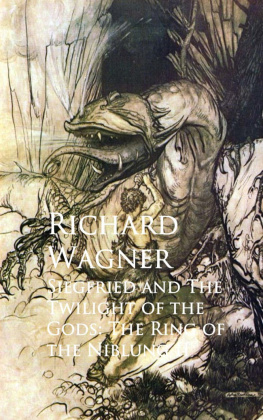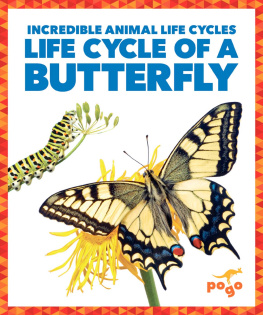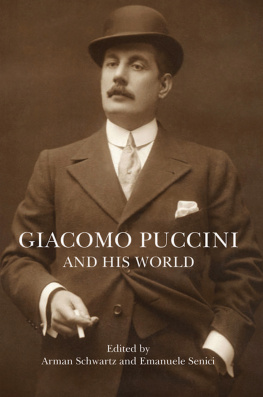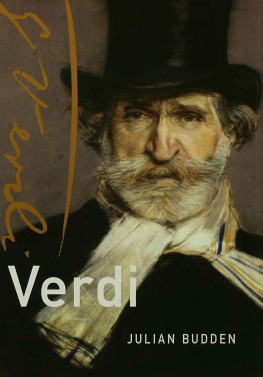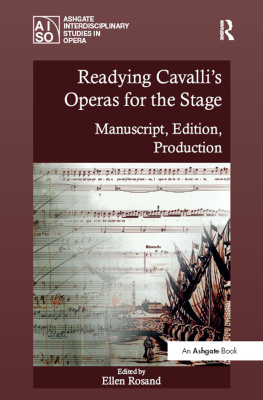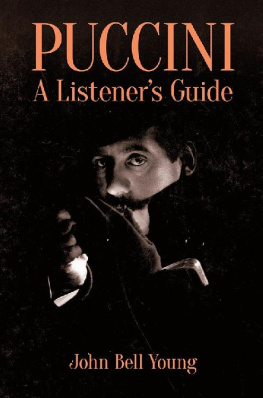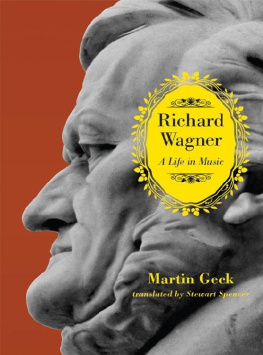
The Romantic World
of Puccini
This page intentionally left blank

The Romantic World
of Puccini
A New Critical Appraisal
of the Operas
IRIS J. ARNESEN
McFarland & Company, Inc., Publishers
Jefferson, North Carolina, and London

I would like to acknowledge the support and encouragement
of the readers of my performing arts publication, The OperaGlass. Their enthusiasm for that project has made work on it, and on this book, a great joy, and I sincerely thank them.
I particularly want to thank Trude Raymond, who opened a
door that otherwise would have remained closed to me.
LIBRARY OF CONGRESS CATALOGUING-IN-PUBLICATION DATA
Arnesen, Iris J., 1955
The romantic world of Puccini : a new critical
appraisal of the operas / Iris J. Arnesen.
p.
cm.
Includes bibliographical references and index.
ISBN 978-0-7864-4482-3
softcover : 50# alkaline paper
1. Puccini, Giacomo, 18581924. Operas.
I. Title.
ML410.P89A66
2009
782.1092 dc22
2009021372
British Library cataloguing data are available
2009 Iris J. Arnesen. All rights reserved
No part of this book may be reproduced or transmitted in any formor by any means, electronic or mechanical, including photocopyingor recording, or by any information storage and retrieval system,without permission in writing from the publisher.
On the cover: Cristina Gallardo-Domas, right, as Mimi and
Marcello Giordani, left, as Rodolfo, in La Bohme, 2005
(AP Photo/Keystone, Eddy Risch)
Manufactured in the United States of America
McFarland & Company, Inc., Publishers
Box 611, Jeerson, North Carolina 28640
www.mcfarlandpub.com
To Fred Woodworth, who makes all things possible
This page intentionally left blank
Table of Contents
Preface.................................................... 1
PART ONE
1. Genre................................................. 5
2. The World of the Rose Cycle............................ 14
3. The Dramatic Influences of Wagner and the Conclusion of
the Rose Cycle....................................... 26
PART TWO
4. Le Villi............................................... 43
5. Manon Lescaut........................................ 56
6. La Bohme............................................ 76
7. Tosca................................................ 99
8. Madama Butterfly.................................... 126
9. La Fanciulla del West.................................. 158
10. La Rondine.......................................... 203
11. Il Tabarro............................................ 230
12. Suor Angelica........................................ 242
13. Turandot............................................ 256
14. The Trouble with Turandot, and How to Fix It........... 281
15. Conclusion........................................... 283
Appendix: The Operas of Giacomo Puccini.................... 287
Chapter Notes............................................ 289
Bibliography............................................. 295
Index................................................... 297
vii
This page intentionally left blank
Preface
DUKE: For women are as roses, whose fair flowr
Being once displayed, doth fall that very hour.
VIOLA: And so they are; alas, that they are so!
To die, even when they to perfection grow!
Twelfth Night
William Shakespeare
The operas of Giacomo Puccini have rarely inspired much respect from critics. Even those who admit to liking his music and who grant his appeal to the audience tend to dep-recate Puccinis works as sentimental tearjerkers slightly hysterical melodramas that for two hours or more appeal entirely to the emotions, while leaving the intellect twiddling its thumbs.
The standard against which Puccini is often measured and found wanting is Giuseppe Verdi, whose operas tend to feature big and masculine subjects, such as the conflict between the individual and the state, or between personal desire and the demands of conscience.
Compared to the monumental goings-on in such Verdi works as Don Carlo, Aida, or even La Forza del Destino, Puccinis subjects can appear hopelessly trivial.
And then of course there is the sadism. Even Puccinis biggest fans among the critics acknowledge, with more or less nervous laughter, how much delight the composer took in torturing his heroines, those frail and gentle creatures, before he crushed them; how he reveled in the death agonies of his pathetic butterflies, broken on the wheel. The only trouble with these characterizations of Puccini, his operas, and his heroines, is that there isnt a word of truth in them. What has caused Puccinis works to be so badly misunderstood is the great complexity and oddness of their librettos. Of all opera composers, it was Puccini who most needed an exciting libretto to stimulate him musically, and unfortunately for him there was only one subject that really excited him. Thats why it was so difficult for him throughout his career to find suitable libretto material.
As a result, Puccinis operas, which on the surface appear to stand as completely independent works, are actually very closely linked. Whether by design or by necessity, Puccinis works form what could arguably be called a cycle, not unlike that of Richard Wagners Ring Cycle.
This thesis no doubt sounds incredible. While Wagners massive operas tell an obviously continuing story of the theft of the Rhine gold and the eventual Twilight of the Gods, complete with characters and musical themes that recur throughout the cycle, Puccinis little works seem to have nothing in common but the style of Puccini. How could the events of his first opera, Le Villi, be the start of a continuing story that concludes forty years later with what happens in his last opera, Turandot?
If the answer could be given in a few sentences, Puccinis cycle would have been 1
PREFACE
identified long ago. The connecting material of Puccinis cycle is so personal, so complex, and so obscured by the operas engaging surface plots and ravishing music, that until now no one has detected it. I was able to detect it because I have studied literature most of my life, and so was able to identify the basic genre of the librettos, and to recognize and understand the significance of the recurring allusions, symbols, metaphors, and character types.
Having also studied music, I was uniquely positioned to see the links between the operas
musical and literary elements.
Part One of this book provides the initial outline of Puccinis operatic cycle, describing the nature and substance of its connecting material. I have called it the Rose Cycle, in honor of the immensely powerful soprano heroines who until the end of the cycle carry flowers, usually the red rose, as a symbol of undying love. Part Two contains a new critical appraisal of the operas contained within the cycle, which include all of the operas that Puccini wrote, with the exceptions of Edgar and
Next page
